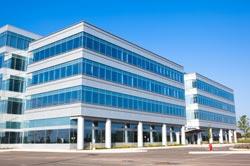If you own a non-green building, not a problem, the Green Building Council of South Africa (GBCSA) has announced the development of the new Green Star SA Existing Building Performance rating tool, sponsored by Nedbank Corporate Property Finance (CPF) and aimed at addressing demand from a new segment of the property market.

If you own a non-green building, not a problem, the Green Building Council of South Africa (GBCSA) has announced the development of the new Green Star SA Existing Building Performance rating tool, sponsored by Nedbank Corporate Property Finance (CPF) and aimed at addressing demand from a new segment of the property market.
This tool will allow effective and objective measurement of an existing building’s environmental performance operation and assess key performance indicators (KPIs) relevant to specific environmental issues such as energy and water consumption.
In Green office property trends in 2013, Manfred Braune, technical executive at GBCSA, said the focus of the green building industry will continue to switch from new building design and construction to greening existing buildings.
GBCSA’s efforts have to date focused on new buildings – advocating specific design and technical interventions to be implemented before and during construction to improve environmental impact and performance.
However, the new rating tool signals the GBCSA’s shifting focus to include transformation of the existing building stock in South Africa, explains GBCSA chief executive officer, Brian Wilkinson.
He points out that this is where a critical mass can be leveraged and makes a substantial difference in the impact of the built environment on the natural environment.
“It is natural progression of the rating tools currently at our disposal and unlocks a whole new frontier for the GBCSA,” he says.
Furthermore, because new buildings only account for between 1 and 2 percent of a company’s portfolio, the Existing Building Performance rating tool is a game changer, which allows all property owners to embrace environmental sustainability across their entire building stock, according to Wilkinson.
“This is a powerful tool which gives property owners a chance to make every building a greener building thus leveraging the benefits such as lower operating costs, higher returns on assets and increased property values,” says Frank Berkeley, managing executive at Nedbank CPF.

The credits of the rating tool will fall within three categories and will consider measurable performance indicators such as water, energy and waste management, lease agreements, management contracts or procurement policies that define performance requirements and building attributes that inform performance.
Berkeley says Nedbank CPF is extensively involved in financing new Green Star Rated Buildings and as financiers and occupiers of the green buildings, they look forward to the value that this new rating tool will add to the journey of a more sustainable environment.
About the tool
Francois Retief, GBCSA project manager, says the Existing Building Performance tool focuses firstly on understanding the issues, then managing existing buildings more efficiently and sustainably.
“It will allow building owners to analyse and benchmark their property portfolio, set out plans for improving the performance of their building stock and create a common language recognising the value of high performing buildings, which can be communicated to both tenants and investors,” explains Retief.
Wilkinson points out that the tool is a pilot project for a year and they are targeting approximately 50 existing buildings.
The credits of the rating tool will fall within three categories and will consider measurable performance indicators such as water, energy and waste management, lease agreements, management contracts or procurement policies that define performance requirements and building attributes that inform performance.
It can be applied to a number of different building typologies such as offices, retail, industrial, hotels and public buildings and hospitals.
He says the rating tool will profile and highlight buildings that are being well operated and ensure that they stand apart from those which are doing more damage than good.
Asked why the pilot project, Wilkinson explains that the development of this tool involves an intense process with consulting firms and peers in the market.
And because of this, lots of consultations and discussions with technical groups and feedback sessions will be undertaken to test the tool under real life conditions.

With the launch and projected uptake of the Existing Building Performance Rating Tool and the reality that existing buildings represent approximately 98 percent of total building stock, the number of certifications could potentially reach 5 000 in the next few years, according to Wilkinson.
Wilkinson says the existing buildings tool differs in that it is progressive (actual) while the new buildings rating tool predicts performance.
The pilot project allows for tweaking and fine tuning, and after a year, the tool will move to Conversion 1.
Greening costs
Asked about the costs involved for property owners wanting to green their buildings, he says while they do not have a specific figure at this point, they hope the costs associated with greening will not be a barrier to entrants, especially of existing buildings, because of the massive scale operation.
He points out that there has been an increase in certification costs because of the complex technical nature of the process.
Into the future
Going forward, Wilkinson says while he does not think the green building sector will be regulated, the public sector, for example, may decide that their own buildings should be green and green buildings will become recognised as best practice by the market place.
“We are going to see more green buildings in future and an increase in property companies differentiating themselves as being green,” he says.
He points to Tower Property Fund, which listed on the Johannesburg Stock Exchange in July, as a company which has committed to greening initiatives aimed at reducing occupancy costs as what distinguishes the fund among other things.
Tower chief executive officer, Marc Edwards said in a statement prior to listing: “The theme of greening will strongly underpin the fund. Recent global research has shown that green buildings outperform normal buildings significantly - on average achieving rental premiums of 6 percent, capital value improvement of 12 percent, while reducing operating costs by 30 percent.”
Read the article here.
For example, Wilkinson says in the past four years, GBCSA has certified 39 new buildings and have a further 59 registered for Green Star SA certification.
With the launch and projected uptake of the Existing Building Performance Rating Tool and the reality that existing buildings represent approximately 98 percent of total building stock, the number of certifications could potentially reach 5 000 in the next few years, he adds. – Denise Mhlanga








